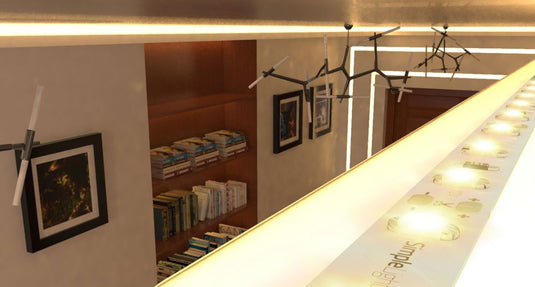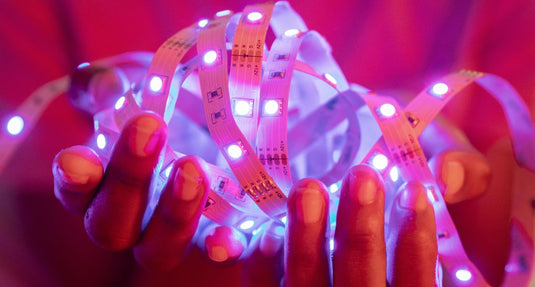Many today suffer injuries due to recklessness concerning certain things that can be avoided by simply following specific instructions. If proper care and precaution are not taken when handling certain products, the environment can become hazardous.
While it is true that certain light bulbs can be disposed of in your household waste, some light bulbs contain materials that can cause harm to the environment if they are not disposed of properly.
In the United Kingdom, the legislation known as the Waste Electrical and Electronic Equipment (WEEE) Directives mandates producers to pay for the collection, treatment, and recovery of waste electrical equipment.
If you want to find out the kind of light bulbs that can be disposed of ordinarily and those that cannot read this article which provides detailed information on the same.
How To Dispose Of Incandescent Bulbs, Halogen Bulbs, And Compact Fluorescent Lamps (CFL)
The kinds of light bulbs that can ordinarily be disposed of in the waste are incandescent light bulbs and halogen bulbs. Expired incandescent light bulbs should not be recycled with regular glass because they contain fine wires that require lots of effort to separate and are also very costly to recycle.
Halogen bulbs should also not be recycled. It is advisable to wrap incandescent and halogen bulbs in waste papers before they are disposed of in case they shatter.
Compact Fluorescent lamps are not easy to dispose of, unlike incandescent light bulbs and halogen bulbs. They are categorised as hazardous waste in line with WEEE Directive as they contain potentially harmful materials, especially lead, mercury and cadmium.
When Compact Fluorescent lamps are disposed of in the household waste, the risk of bulb breakage is high. Harmful materials are released into the air and nearby water sources when this happens. Once these substances penetrate the skin, they can cause harm to you and waste management workers. However, CFL(s) can be recycled so that valuable parts of the lamp (like glass and metal components) are not misplaced.
Do LED Light Bulbs Contain Harmful Materials?
LED light bulbs are composed of materials like nickel, silver, lead, and arsenic which are essential for the performance of LED bulbs. However, these materials are harmful if the bulb breaks, so they cannot be disposed of ordinarily, like incandescent light bulbs and halogen bulbs. This is no cause for alarm as bulbs screwed to the ceiling are very unlikely to break. Also, this article will provide you with the correct information on how to dispose of your LED bulbs.
Before you think of getting bulbs that can be disposed of in your household waste because of the harmful materials in LED lamps, it will interest you to know that the average rated lifespan of LED lamps is 50,000 hours. On the other hand, an average incandescent bulb lasts for only 1,200 hours.
This means that you would have used over 40 more incandescent bulbs when you could use just one LED light. Also, only very few LED lights have been disposed of. This is because of the long lifespan of LED lights such as LED neon lights or LED neon, LED neon flex, lights commercial LED or commercial lighting, lights LED neon, LED strip lights, or strip lights such as white LED strips, amongst others.
Taking the necessary precautions with disposing of LED bulbs is just like cutting off the gall bladder of a chicken meticulously so as not to break it as the whole chicken becomes bitter once it breaks. Imagine not eating chicken because you are scared of breaking the gallbladder. Irrational right?
How To Dispose Of Led Light Bulbs
There are two methods you can use to dispose of LED bulbs.
Method One
LED bulbs do not contain mercury and are thus considered safe in many places. However, you may be required to recycle light bulbs or dispose of them in a special facility. You can simply type, “Can I dispose of LED bulbs in Oxford” on Google.
This prevents sharp pieces from ripping through the garbage bag where the LED bulbs break. This also prevents hazardous materials from escaping.
Where it is against the laws of your area to throw LED bulbs in a garbage bag, take the bulbs to a special facility near you. To search for nearby facilities close to your house, simply use the Google search engine as a guide.
You would need to also get a waste paper to wrap the LED bulbs in. There might also be a need for you to present your proof of residency. Ensure that you ask for the rules and regulations of the facility you intend to use and be sure that they accept LED bulbs.
Method Two
You can recycle LED light bulbs. Do a Google search on facilities around you that can accept LED bulbs. This is an eco-friendly option you can opt for.
Give the facility you want to use a call to find out if they have general requirements or rules in accepting LED bulbs. This requirement may be concerning packaging the bulbs. Also, be very sure that the view facility accepts LED bulbs.
If recycling facilities do not take your LED bulbs, some companies allow certain LED lights to be shipped for recycling. These companies do light bulb recycling for users for free. Simply contact them in case of any special requirement regarding packaging and shipping your light.
Conclusion
If you take any of the measures above, you can safely dispose of your used LED bulbs. If you have other questions on how to dispose of your LED light bulbs, light bulbs recycle, lighting buying guides, selection of lighting, buying new LED lighting products, or delivery of our products, you can reach us here; we would be glad to help.




